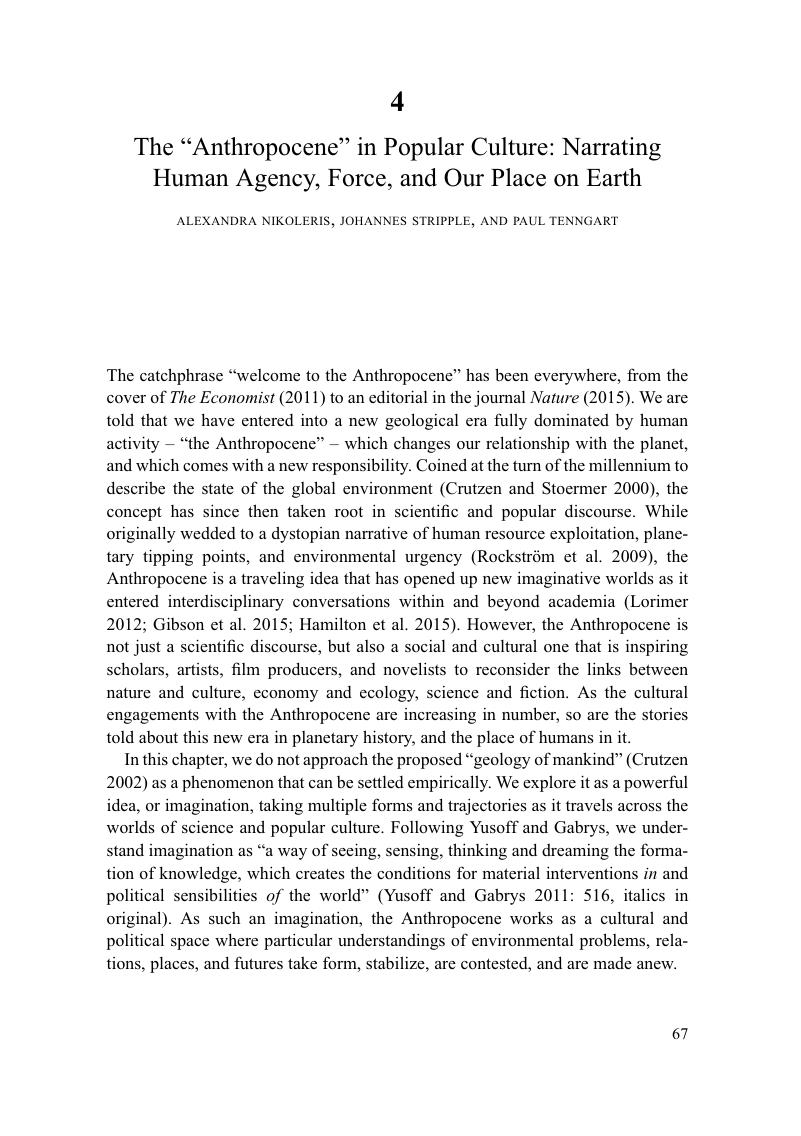Book contents
- Anthropocene Encounters: New Directions in Green Political Thinking
- Series page
- Anthropocene Encounters
- Copyright page
- Contents
- Figures
- Contributors
- Acknowledgments
- 1 Encountering the “Anthropocene”: Setting the Scene
- Part I The Conceptual Politics of the Anthropocene: Science, Philosophy, and Culture
- 2 The “Anthropocene” in Global Change Science: Expertise, the Earth, and the Future of Humanity
- 3 The “Anthropocene” in Philosophy: The Neo-material Turn and the Question of Nature
- 4 The “Anthropocene” in Popular Culture: Narrating Human Agency, Force, and Our Place on Earth
- Part II Key Concepts and the Anthropocene: A Reconsideration
- Part III The Practices of Political Study in the Anthropocene
- Index
- References
4 - The “Anthropocene” in Popular Culture: Narrating Human Agency, Force, and Our Place on Earth
from Part I - The Conceptual Politics of the Anthropocene: Science, Philosophy, and Culture
Published online by Cambridge University Press: 21 January 2019
- Anthropocene Encounters: New Directions in Green Political Thinking
- Series page
- Anthropocene Encounters
- Copyright page
- Contents
- Figures
- Contributors
- Acknowledgments
- 1 Encountering the “Anthropocene”: Setting the Scene
- Part I The Conceptual Politics of the Anthropocene: Science, Philosophy, and Culture
- 2 The “Anthropocene” in Global Change Science: Expertise, the Earth, and the Future of Humanity
- 3 The “Anthropocene” in Philosophy: The Neo-material Turn and the Question of Nature
- 4 The “Anthropocene” in Popular Culture: Narrating Human Agency, Force, and Our Place on Earth
- Part II Key Concepts and the Anthropocene: A Reconsideration
- Part III The Practices of Political Study in the Anthropocene
- Index
- References
Summary

- Type
- Chapter
- Information
- Publisher: Cambridge University PressPrint publication year: 2019
References
- 3
- Cited by



